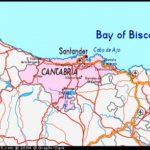Sure,
Barcelona has turned into a cauldron of culinary kookiness, using the foams and froths of master chef Ferran Adrià and the disciples. But you may still obtain a taste of yesteryear and traditional Catalan cooking.
Having a status for creating a number of Spain’s finest cuisine, it isn’t only a matter of a couple of regional dishes however a gastronomy dissimilar to that found elsewhere in the united states or perhaps in neighbouring France.
A geographically diverse region, Catalonia produces a number of fresh, high-quality sea food, meat, chicken, game, fruit and veggies. These comes in unusual combinations: meat and sea food (a genre referred to as marly i muntanya – the neighborhood same as surf ‘n’ turf ), chicken and fruit, fish and nuts.
Catalans fight to realise why others put butter on bread when pa amb tomàquet – bread toasted applied with tomato, essential olive oil, garlic clove and salt – is really much tastier. It’s few regional pride, frequently stated to mirror the shades from the Catalan flag, and lots of restaurants – for example La Vinateria del Call or Alcoba Azul – turn it into a mainstay from the menu, so that your only task would be to choose accompaniments.

Catalan pa amb tomàquet (bread with tomato plants). Image by Jo Cooke / Lonely Planet
Pernil (pork) and formatge (cheese) are culinary constants. The primary centres of cheese production in Catalonia have been in La Seu d’Urgell, the Cerdanya district and also the Pallars area within the northwest. Although a lot of traditional cheeses are disappearing, you’ll still manage to find items like formatge de tupí, a goat’s cheese drenched in essential olive oil, and gorritxa, another goat’s cheese (created using penicillium mould) that’s meltingly soft around the tongue. You’ll also find a variety of sausages, using pork like a base. Some generic names include botifarra, fuet (a skinny, dried pork sausage) and llonganissa. Katherine at Formatgeria La Seu, though Scottish, is regarded as its expert on artisanal cheeses, and you may book a tasting session at her wonderful little cheese shop.
Catalans are enthusiastic about bolets (wild mushrooms), frequently disappearing for several days in fall to choose them. Mind for that stall known as Petras at the rear of the Boqueria marketplace for a concept of just the number of varieties you will find. Calçots (large sweet spring onions), that are roasted over hot coals, drizzled with spicy romesco sauce (a finely ground combination of tomato plants, peppers, onions, garlic clove, almonds and essential olive oil) and eaten voraciously while in season from The month of january until March, are another national favourite. The calçot ritual most typically happens like a Sunday lunch outing where the calçots are the initial course, adopted by copious meat and sausage dishes because the primary. Use them within the traditional farmhouse restaurants dotted over the Collserola hillsides outdoors the town.
In Catalan kitchens, greater importance is related to sauces compared to a lot of the remainder of The country. The most typical are sofregit (fried onion, tomato and garlic clove), samfaina (much like ratatouille – sofregit plus red pepper and aubergine or courgette), allioli (pounded garlic clove with essential olive oil) and picada (according to ground almonds along with other ingredients, for example garlic clove, parsley, nuts and breadcrumbs, to match each dish).
Grain is grown within the Delta de l’Ebre area in southern Catalonia and offer a number of good uses. Arròs a la cassola or arròs a la catalana is Catalan paella, cooked within an porcelain pot and without saffron, whereas arròs negre is grain cooked in cuttlefish ink – it’s much tastier of computer sounds. Another speciality is fideuà, which has similarities to paella but uses vermicelli noodles instead of grain because the base. It’s also wise to get a little side dish of allioli to combine in as you want – should you not, request it. Check it out at Can Ros or Bar Joan, based on your financial allowance.

Catalan pizza, or coca, here with peppers, artichokes, tomato plants and cheese. Image by Jo Cooke / Lonely Planet
The Catalan form of the pizza may be the coca. There are lots of variations, both savoury and sweet. The savoury option come with tomato, onion, pepper and often sardines. The sweet version, generally almond-based, is much more common and it is a typical item at many a festa (festival) all year round.
Sea food is at the top of Catalan menus but hearty meat dishes in the interior also figure conspicuously. Botifarra (sausages) are available in many sizes and shapes, as well as for some there’s nothing much better than a sizzling solomillo (sirloin) of vedella (beef ) prepared a punto (medium rare).

An array of pinxtos in a bar in San Sebastián. Image by
Katina Rogers /
CC BY 2.
Not initially a fundamental element of the Catalan eating tradition, tapas culture was lengthy ago imported to Barcelona. Particularly popular would be the Basque Country versions – present in bars like Euskal Extea –, pintxos, many of which come by means of canapés. On slices of baguette are perched everything from bacalao (cod) to morcilla (black pudding). They are most refreshingly washed lower having a slightly tart Basque white-colored wine, txacoli, that is offered like cider allow it a couple of (temporary) bubbles. Each pintxo has a toothpick and payment is as simple as the honor system – you retain your toothpicks and offer them for that final count whenever you request the balance.
Traditional desserts include crema Catalana, a scrumptious form of crème brûlée, but you could also be provided mel i mató, honey and fresh cream cheese. Another alternative may be the appealingly named músic – dried nuts and fruits, sometimes combined with frozen treats or cream cheese, and offered having a glass of sweet muscatel wine.
Resourse: http://lonelyplanet.com/the country/barcelona/travel-tips-and-articles/an-introduction-to-catalan-cuisine/
Catalan Food Fest
Video COMMENTS:
Romantic Explorers TV: Oh my goodness this looks insanely delicious! My mouth was literally watering watching this 😀 Keep up the good work guys!
2foodtrippers: We just couldn't believe all the courses. The snails were especially good and expertly prepared in a style we had not tasted before!
Dee Ocky: Gosh, that looks like a seriously great dining experience. I wonder if the snails were braised in white wine sauce with herbs? Everytime I go to my favourite French Restaurant near my place, I have escargot ! just love putting snail on my baguette with extra garlic butter……..mmmmm yummy ! Next time I'll have to try snails at a Spanish Restaurant.
2foodtrippers: Those snails were cooked Catalan style in a red tomato sauce and with ground bits of pork. The flavors were hearty and earthy and we loved them. We don't know if they serve snails like these at Spanish restaurants. This food is Catalan which may be a little different. Costa Brava, where we ate, is less than an hour from the French border. Glad you enjoyed!
Way 2 Good Life Kids: OMG, Was that an eye roll Mindy on the Duck ravioli? You are guys are making me hungry. I should watch you after lunch – not before
2foodtrippers: I'm sure that was a positive eyeroll – a technique of appreciation that Mindi uses in many of our videos! We believe that you should watch our videos BEFORE breakfast, lunch and dinner. 😃
Tara Cannon: That just made me so hungry. The food looks amazing.
2foodtrippers: We were thrilled to eat so many great things in Costa Brava. It's in one of the great food (and wine) belts of the world.
Howard Blount: Prawns and rice! What could be better?
2foodtrippers: It's something that Daryl lives for. Short grain rice like risotto and, in this case, nembo make for such hearty, rich memorable meals.







